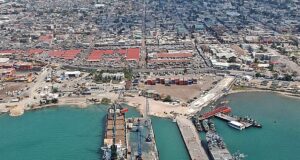January 10, 2015
By Rebecka Buchanan – Research Assistant
The legal classification of cross-border armed conflicts between State and non-State parties has become increasingly complex as such conflicts do not fit into the neat typology of international armed conflict (IAC) or non-international armed conflict (NIAC). NIACs are primarily regulated by international human rights law (IHRL), and while international humanitarian law (IHL) binds each party to the conflict, only State parties have direct human rights obligations. The law applicable to each party to a NIAC remains controversial, as there is a lack of clarity regarding whether organised armed groups may be expected to comply with human rights law during armed conflict.
Legal Classification of Cross-Border Conflicts with Organised Armed Groups
The legal classification of armed conflicts between a State and organised armed group, taking place on the territory of another State, can be complex in light of the developing types of NIAC. Traditionally NIACs opposed a State and organised armed group within the territory of the State party, however today there has been an increase in NIACs involving a cross-border element.[1] There lies a difficulty in classifying such cross-border conflicts as either IAC or NIAC because of the extraterritorial element, as the State’s armed forces may not be directing force against another State but against an organised armed group operating on that State’s territory. Some authors have even questioned the applicability of IHL to such armed conflicts, asserting that IHRL and extraterritorial law enforcement should govern any lethal use of force used.[2] Cross-border conflicts share common features with both IACs and NIACs: both IACs and cross-border conflicts involve a cross-border element with hostilities occurring on more than one territory and parties to the conflict operating from different States; while NIACs and cross-border conflicts both involve hostilities between State armed forces and an organised armed group.[3]
Typically there are three main possibilities of classification. First, where the use of force by an organised armed group can be attributed to the State in which the organised armed group is present (territorial State) this would engage the rules of IAC.[4] To engage the responsibility of the territorial State it must be shown that the State had overall control[5] over the conduct of the organised armed group that directly contributed to hostilities with the State using force (foreign State) in the territory of the territorial State. Thus the armed conflict would engage the territorial State and the foreign State. Second, where the territorial State consents to the use of force by the foreign State against the organised armed group, on its territory, the conflict between the foreign State and organised armed group would be classified as a NIAC.[6] Even though a foreign State is engaging in conflict on the territory of another State the law applicable is that of NIAC because the conflict is between the foreign State and the organised armed group, albeit on the territory of another State. Finally, where the territorial State does not consent to the use of force by the foreign State against the organised armed group on its territory there may be a parallel IAC and NIAC occurring on the territorial State’s territory. The lack of consent from the territorial State triggers the application of the law of IAC as the extraterritorial use of force by the foreign State on the territorial State’s territory can be seen as a prohibited use of force against the territorial State, [7] even though the force is directed against the organised armed group rather than the territorial State. The hostilities between the foreign State and organised armed group would remain governed under the law of NIAC. The aim of this ‘double classification’ approach is to take into consideration that the acts of the organised armed group cannot be attributed to the territorial State, thus there must be two separate conflicts occurring simultaneously.[8] This type of cross-border NIAC can be exemplified by the cross-border NIAC between Israel and Hezbollah in 2006 that took place on the territory of Lebanon. Alongside the conflict between Israel and Hezbollah, the illegal use of force by Israel against Lebanon constituted an IAC between Israel and Lebanon.[9]
Law of Non-International Armed Conflict
The law applicable to cross-border conflicts involving organised armed groups depends on the facts of the situation. In the first scenario, the law of IAC would govern hostilities, while the law of NIAC would govern hostilities in the second. However in the third scenario, the lack of consent from the territorial State complicates matters and the law of IAC and NIAC will be engaged simultaneously. Although we can say the law of NIAC is engaged, exactly what provisions of the law of NIAC govern the conflict is more complex as the law of NIAC was developed with internal conflicts in mind. Although Additional Protocol II to the Geneva Conventions excludes applicability to cross-border conflicts because of its narrow scope of application – it applies only to conflicts between State armed forces and organised armed groups on the territory of the State[10] – Article 3 Common to the Geneva Conventions and customary IHL may regulate all NIACs.
Common Article 3, prima facie, appears to confine NIACs to the territory of one State as it refers to conflicts ‘occurring in the territory of one of the High Contracting Parties’. It is argued that ‘in the territory’ should not be construed as meaning that conflicts involving more than one territory are excluded from the scope of the Article. The wording should be understood as emphasising that treaties may only apply to State parties, therefore as long as the State involved in the cross-border NIAC, or the State on whose territory fighting is occurring, is party to the Geneva Conventions Common Article 3 should apply, otherwise there would be a gap in legal protections.[11] Regardless of whether the State involved in the conflict is a State party to the Geneva Conventions or Additional Protocol II, customary IHL binds both the State and organised armed group, and it is recognised that Common Article 3 has attained the status of customary law.[12]
Human Rights Obligations
It was traditionally believed that IHL governed armed conflicts, while IHRL governed peacetime. However the International Court of Justice has confirmed that IHRL continues to apply during times of armed conflict.[13] It has been argued that IHL and IHRL complement one another, and may operate simultaneously, with conflicts being resolved by the application of the lex specialis principle determining the most specific rule to prevail in a given situation.[14] Thus international human rights obligations may bind State parties to a cross-border NIAC where treaty obligations may extend extraterritorially,[15] however the imposition of human rights obligations on organised armed groups remains highly controversial.
The rationale behind IHRL is to govern the relationship between the State and individuals under its jurisdiction, therefore it has been argued by the United Nations Commission on Human Rights and the Human Rights Council that it may be ‘appropriate and feasible’ to impose human rights obligations on organised armed groups that exercise significant control over territory and population, and have an identifiable political structure.[16] Similarly, the United Nations High Commissioner for Human Rights, at a United Nations Human Rights Council Special Session on the Human Rights Situation in the Occupied Palestine Territory, said that it was imperative Israel, Hamas and all Palestine armed groups abide by IHL and IHRL.[17] Many organised armed groups, including Hamas, have made public declarations of their commitment to respecting human rights obligations.[18] Of course organised armed groups cannot be bound by the same human rights obligations as States, flowing from treaty law, however the Human Rights Council has stated that they are bound, at a minimum, by jus cogens norms.[19]
Concluding remarks
The law of IAC was designed to regulate conflicts between sovereign States, with the law of NIAC regulating conflicts between a State and non-State. It is therefore the nature of the parties to the conflict, rather than the cross-border element, that constitutes the decisive factor in characterising the conflict as international or non-international.[20] While IHL binds ‘each Party to the conflict’, it remains controversial whether IHRL may do the same. Although State parties to a conflict have human rights treaty obligations, organised armed groups do not. However, the United Nations Security Council has in many situations demanded organised armed groups to cease violence and human rights abuses.[21] The International Law Association has noted that organised armed groups do not incur any direct human rights obligations enforceable under international law, although the international community may expect them to refrain from committing human rights violations and organised armed groups may be bound by jus cogens norms.[22]
[1] ICRC, ‘International Humanitarian law and the Challenges of Contemporary Armed Conflicts’, Report, 31st International Conference of the Red Cross and Red Crescent, October 2011, EN, 31IC/11/5.1.2, p.9.
[2] Vashakmadze, ‘The Applicability of International Humanitarian Law to ‘Transnational’ Armed Conflicts’, MWP 2009/34, EUI Working Papers, Max Weber Programme, 3.
[3] Schondorf, ‘Extra-State Armed Conflicts: Is There a Need for a New Legal Regime?’, (2005) 37(1) International Law and Politics 1, pp.35-40.
[4] Vite, ‘Typology of Armed Conflicts in International Humanitarian Law: Legal Concepts and Actual Situations’, (2009) 91(873) International Review of the Red Cross 69, 90.
[5] Prosecutor v Du(ko Tadi), Judgement, ICTY Appeals Chamber, 15 July 1999, Case No. IT-94-1-A, Para. 120.
[6] Fleck, The Handbook of International Humanitarian Law (Oxford University Press, New York: 2nd Edition) p.607.
[7] Sassoli, ‘Transnational Armed Groups and International Humanitarian Law’, (2006) Programme on Humanitarian Policy and Conflict Research, Harvard University, Number 6, 6.
[8] ICRC, ‘International Humanitarian law and the Challenges of Contemporary Armed Conflicts’, Report, 31st International Conference of the Red Cross and Red Crescent, October 2011, EN, 31IC/11/5.1.2, p.10.
[9] Vite, ‘Typology of Armed Conflicts in International Humanitarian Law: Legal Concepts and Actual Situations’, (2009) 91(873) International Review of the Red Cross 69, 92.
[10] Additional Protocol II, Article 1(1).
[11] Sassoli (2006) 9.
[12] http://www.icrc.org/eng/war-and-law/treaties-customary-law/customary-law/overview-customary-law.htm
[13] Legality of the Threat or Use of Nuclear Weapons, Advisory Opinion, ICJ Reports 1996, p.226, para.25.
[14] Sassoli and Olson, ‘The Relationship Between International Humanitarian and Human Rights Law Where it Matters: Admissible Killing and Internment of Fighters in Non-International Armed Conflicts’, (2008) 90 (871) International Review of the Red Cross 599, 603-604.
[15] Legal Consequences of the Construction of a Wall in the Occupied Palestinian Territory, Advisory Opinion, ICJ Reports 2004, p.136, para111.
[16] Economic and Social Council, ‘Civil and Political Rights, Including the Questions of Disappearances and Summary Executions: Extrajudicial, Summary or Arbitrary Executions’, Report of the Special Rapporteur Philip Alston, Commission on Human Rights Sixty First Session, 22 December 2004, E/CN.4/2005/7, p.21 para.76; United Nations General Assembly, Human Rights Council, A/HRC/2/7, 2 October 2006, para.19.
[17]‘Human Rights Council Opens Special Session on the Human Rights Situation in the Occupied Palestine Territory’, 23 July 2014, UNOG: http://www.unog.ch/unog/website/news_media.nsf/(httpNewsByYear_en)/4C9CDF7FE83E0581C1257D1E00434418?OpenDocument.
[18] United Nations General Assembly, Human Rights Council, Human Rights Situation in Palestine and Other Occupied Arab Territories, 6 June 2008, A/HRC/8/17, para.9.
[19] Human Rights Council, Report of the Independent International Commission on the Syrian Arab Republic, 22 February 2012, A/HRC/19/69, p.20 para.106.
[20] Vite, ‘Typology of Armed Conflicts in International Humanitarian Law: Legal Concepts and Actual Situations’, (2009) 91(873) International Review of the Red Cross 69, 92.
[21] S/RES/1991 (2011) para.13.
[22] International Law Association, The Hague Conference, Non State Actors, (2010), First Report of the Committee, para.3.2.
 Human Security Centre Human Rights and International Security Research
Human Security Centre Human Rights and International Security Research



